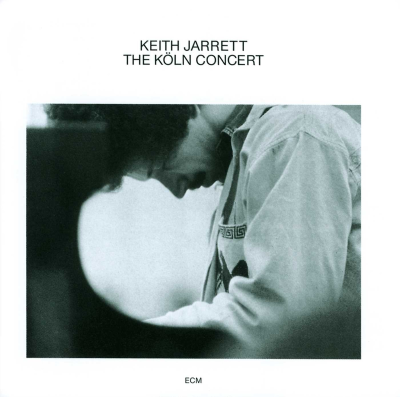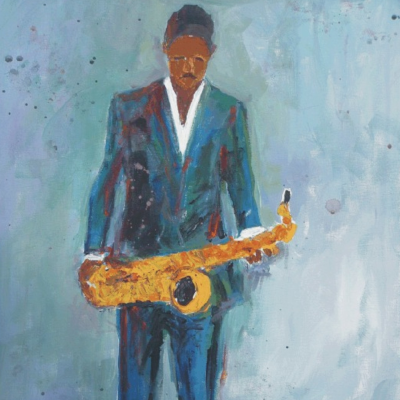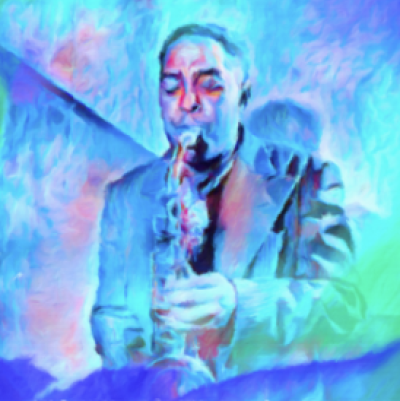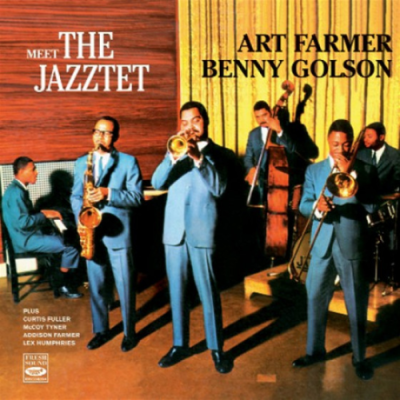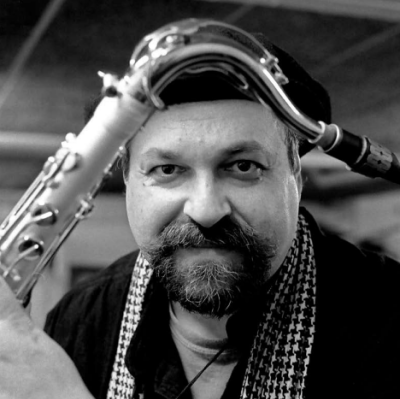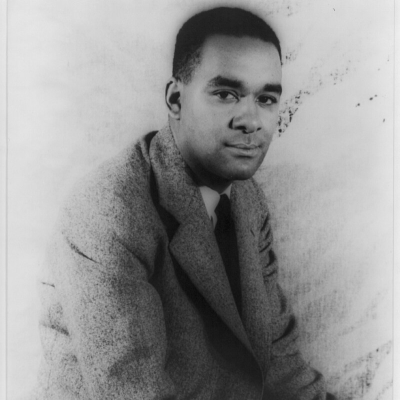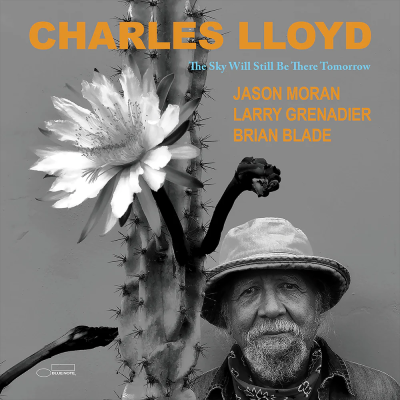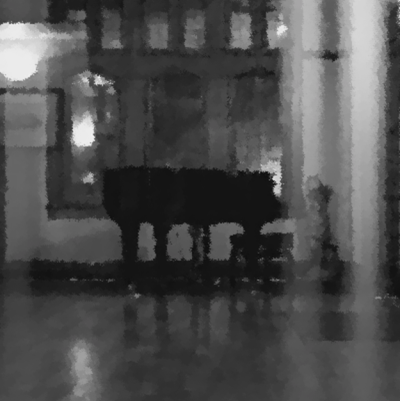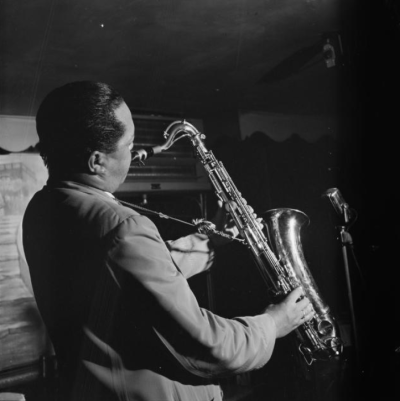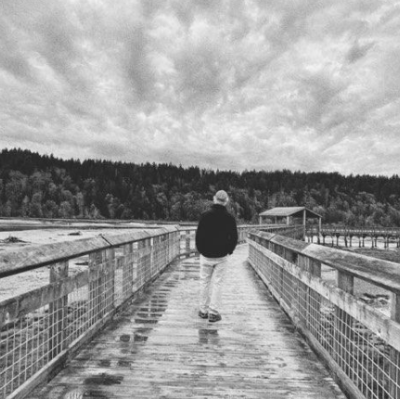When liberal Republican John Lindsay was elected mayor of New York in 1965, political observers described him as a White Knight, the best hope for a stagnant and troubled city. A reformer with movie-star looks, Lindsay brought glamour and hope to City Hall. At the height of his appeal, leading politicians from both parties, including Nelson Rockefeller and Robert Kennedy, feared Lindsay’s growing popularity. Some even pegged him for the White House.
After defeating incumbent Robert Wagner, Lindsay vowed to wrestle control of the city from its “power brokers” and revitalize New York into “Fun City.” Lindsay’s idealistic agenda and charismatic presence made him the toast of New York.
But from his first day in office, Lindsay faced one battle after another. Throughout his tenure, New York experienced an upheaval that reflected the state of the nation during this turbulent era. Civil rights, community control of schools, student unrest at Columbia University, urban development, and antiwar rallies all posed major political dilemmas.
By the end of his second term as mayor, Lindsay was fatigued and disillusioned, his political career devoid of its early promise, a man rendered as one pundit described an “exile” in his own city.#
Vincent Cannato, author of The Ungovernable City: John Lindsay and his Struggle to Save New York, talks with Jerry Jazz Musician publisher Joe Maita about Lindsay and how his ideas impacted New York and his own political fortunes.
______________________________________
JJM How did America’s fascination with John Kennedy open the door for John Lindsay?
VC The great Camelot mystique of the early sixties that was about youth and fresh ideas invigorated American politics — especially after the Eisenhower years — and captured the imagination of the country. Lindsay really tapped into that. He was a congressman during the Kennedy years and didn’t run for mayor until after Kennedy’s assassination, but there was still a lingering aura of Camelot that Lindsay successfully tapped into. During this era, idealism was prevalent. Cynicism had not yet set in, the quagmire of Vietnam was still in the distance, the Civil Rights Act was signed, and we had not quite got into black power and other radical ideas. There was a window of opportunity for idealism and for reviving Camelot that Lindsay tried to grab hold of.
JJM So, Lindsay’s charismatic appeal connected him to Kennedy in some way.
VC Yes. There were not a lot of similarities but there are some. They both had strong, assertive and smart wives, with big families and young children. They were energetic World War II veterans, who in the sixties were the young generation who had just won the war and were now reaching the age where they are taking power in the country. They each used the rhetoric of grand idealism, speaking of a better future.
JJM Was he annoyed by these comparisons?
VC He would sometimes publicly be annoyed, but I think deep down he probably wasn’t because overall it was a positive for him. As often as he might have rolled his eyes or sighed about the Kennedy comparison, it made for good politics.
JJM A former Lindsay aide said, “I don’t think John has ever really been close to anyone in his life except his brothers and his wife. No one knows what really goes on in that mind.” What were his characteristics?
VC Lindsay was somewhat aloof. Someone once said of him that he was attracted to older mentor types like U.S. attorney general Herb Brownell, as well as to younger acolytes, especially his young twenty-something aides who looked up to and worshipped him. But he always had problems with people his own age. In some ways he was sort of like Al Gore, whose closest aides are his wife and daughters. Lindsay’s closest aides were his wife and brothers. The circle of trust did not go much beyond family. So, he looked up to his older mentors, and with admiration at his younger aides. He didn’t have many people his own age that he could rely on for advice.
JJM What was the basis for his being a member of the Republican Party?
VC It was quite natural for someone with his background and social class — and being from Manhattan — to be a Republican. This was the era of liberal Republicanism, when the Republican Party was the domain of people like Nelson Rockefeller, and other wealthy “Northeastern types.” So, it was quite natural for him to be a Republican. In New York, it also meant that you were opposed to the Tammany Hall machine and the corrupt Democratic machine politics that dominated the city. Clearly one of Lindsay’s idols was Mayor Fiorello LaGuardia, whom Lindsay had gone to meet as a very young child. LaGuardia was a liberal New-Dealer but who was Republican, fighting against the machine of Tammany Hall.
LaGuardia became an elected Republican in a Democratic city by running as a fusion candidate. This idea of fusion was picked up by Lindsay in 1965. It was possible to get elected as a Republican by fusing together different groups of people in a non-partisan way, who were all angry at the Democratic machine. Lindsay didn’t run as a partisan Republican, nor did LaGuardia. They ran as non-partisans. A famous line of LaGuardia’s, “There is no Republican or Democratic way to pick up the garbage,” is a great example of how you run as a Republican in a city that is dominated by the Democratic Party.
JJM As a congressman, what role did Lindsay play in the passage of the 1964 Civil Rights Act?
VC In many ways, Lindsay was a real outcast in Congress. He was a minority within a minority. He was a Republican in a Congress dominated by the Democrats, and he was a liberal Republican in a party that was growing increasingly conservative. As a Republican member of the Judiciary Committee, he played a big role in writing the Civil Rights Act of 1964, which most Republicans in Congress voted for. He was sitting in the first or second row when Lyndon Johnson signed the bill, and was seen as a leading voice in the Republican Party in favor of civil rights.
JJM In 1966, US News and World Report argued that life in New York “had tended to become more and more unsettled, uncomfortable and downright dangerous, less and less pleasant.” What conditions existed in New York that led to Lindsay’s election?
VC Yes, how does a Republican get elected in a Democratic city? It has got to be as a result of anger and resentment against the Democratic Party and the status quo. There was a Democrat in City Hall for twenty years, and there was an increasing feeling that by 1964, many things had gone awry. Crime was going up, there were fiscal shenanigans by Mayor Robert Wagner toward the end of his career, a sense that the city was dirtier and that poverty was increasing. There was a general unease with the way things were going in the city. The city had also been losing population in the fifties and sixties. You can now look back and really see the great demographic shift that was taking place. During the fifties, the city lost close to one million middle- class whites. They were replaced by a large influx of mostly poor minorities. This really changed the demographics of the city, in terms of ethnicity and race as well as the city’s socio-economic status. The city grew darker and it grew poorer. There was an unease settling in the city about these great changes.
JJM And these changes set into motion the “northern civil rights movement,” which included the issues of police treatment of minorities, open housing laws and busing of school children.
VC Yes, the big issues in New York were education reform and police brutality.
JJM Did he decide to run for mayor because he wanted to address these challenges, or did he run because he couldn’t run for the Senate or the Governor’s office at the time?
VC I don’t think there was any kind of deep political calculation going on. While there was really no other office for him to run for since the Senate seats were out of reach and because Rockefeller was entrenched as Governor, he ran for mayor in 1965 really and truly to save the city. He was sort of dragged into running in some ways, because people were asking him to come and save the city, that the city needs you, that the city can’t afford four more years of Democratic rule. So, he ran as a candidate who was going to completely reform and improve the city.
JJM What did he believe New York’s biggest problem to be at that point?
VC Everything. In 1965, the New York Herald Tribune ran a series called “City in Crisis,” which was designed to look at the problems of the city. They reported on problems found in every aspect of society, from air pollution to crime to discrimination to fiscal problems, to potholes — you name it. Today, we are much more cynical, and we know how hard it is to fix these problems and to change society. Back then, however, Lindsay took all these challenges on.
JJM How did the objectives of the northern civil rights movement, which Lindsay was so strongly in favor of, clash with those of the police?
VC That comes down to the issue of the Civilian Review Board, which would have instituted an independent board to monitor cases of police brutality. This had become an issue in the late fifties and early sixties, and Lindsay grabbed on to it. If he was going to be mayor, he was going to have an independent civilian review board that would judge cases of police misconduct. It was largely a civil rights issue, because when you talk about police mistreatment of civilians you are primarily talking about the mistreatment of blacks. So, he runs for mayor on this. It was a perfectly natural civil rights issue, but what it gets translated into, at a time when crime rates are rising, is an “anti police” issue. It was interpreted that Lindsay was more concerned about issues of police brutality than he was about crime. There was a polarization among people who saw this as a continuation of the civil rights movement, and those who felt the concern should be about the rising crime rate and not about cases of police brutality.
JJM And Lindsay was concerned about preventing the sort of rioting that was occurring in Los Angeles, Detroit, and other cities. Perhaps he erred on the side of appeasing minorities, which cost him with the police. As the journalist Jack Newfield wrote concerning this, “What it all comes down to in the here and now is that Lindsay gets cheered in Harlem and Berkeley and cursed by taxi drivers and cops.”
VC Yes, that is the division right there. When the civil rights movement goes north, it is no longer this crystal clear “black versus white,” “good versus evil,” clear-cut moral issue of going after Jim Crow. As it moves north it gets so much more complicated, and I don’t think Lindsay ever saw how complex these other issues were. There was the issue of crime, but also of class, where people like taxi drivers, plumbers, electricians, construction workers — themselves only barely in the middle class — didn’t really have solid footing economically. These were the people who stood to lose out on the Civilian Review Board, because they felt that their safety was being put into jeopardy. Also, it was feared that open housing laws would hurt property values for homeowners who had only a token hold on the middle class. So, the issue cut across racial lines, but also economic lines. Wealthy Manhattan-ites, who were more insulated from some of these social issues, were very much supportive of civil rights, and were very much in favor the Civilian Review Board and education reform as long as they were not affected adversely by them. It created a resentment among many of those people who felt they were on the front lines of these issues, and it further divided the races, in a way.
JJM Describe what “dissensus politics” is?
VC This was a popular idea of the mid to late sixties, that in order to affect radical change in society, things needed to be stirred up. You needed to have protest and you needed to have people speaking out — not quite violently — but you needed to highlight and make clear the divisions. So, you get groups like the National Welfare Rights Organization having sit-ins at welfare department offices to put a spotlight on the issue of welfare, and to get society to deal with it. Unfortunately, these protests drove a wedge in society.
JJM The white counterculture added to the mix of this dissensus politics, didn’t it?
VC Yes, although they were different organizations and different groups of people, they were interwoven together. When you combine the effects of all of them, it added to the polarization of society. We used to think of the sixties as being a radical decade, but in reality it was an era of polarization where two sides were pushed apart. Everything from the war in Vietnam to the counterculture, to civil rights and black power were pushing each side further apart, and Lindsay was the guy attempting to straddle both sides. As the division between them got wider, he finally had to decide which side to support. At this point he began speaking out against the war in Vietnam and outwardly sympathized with the counterculture, even though he himself is a pretty square, clean cut Yale graduate with a wife and kids. There was nothing countercultural about Lindsay, but he sympathized with the student protestors and felt they were saying something that needed to be listened to.
JJM He embraced the country’s youth rebellion, and you could say that he blamed the white middle class for blocking school reform as well.
VC The issue of Ocean Hill-Brownsville and school reform became a huge question. How does one integrate a northern urban school system? The terrible irony is that in 2003 we are still talking about the same issue. There weren’t laws that said blacks should attend this school or that school, it was in residential patterns, where blacks and whites lived. At the same time, more and more whites were leaving the public school system for either the suburbs or for a private parochial school. These factors made the integration of the races even harder. So, from the time of the Brown v. Board of Education decision in the mid fifties, New York tried to deal with the issue of how to better integrate their schools. None of their plans were working. By the early sixties, there was a feeling among some in the black community that integration was not going to happen, and that they needed to take control of their own schools. Thus, there was the rise of a community control movement.
JJM And black militants came in and influenced education reform.
VC Yes. That was an unfortunate side-effect, that their interest in having control over the curriculum coincided with a greater trend toward Afrocentricity. While part of that is good — to teach people about their heritage and their culture — there was a down side to some of that as well. In the Brownsville area especially, some teachers were criticized for being anti-white or anti- Semitic, and it dissolved into a kind of anarchy. As the militants ratcheted up the rhetoric, more and more whites were saying that, while they support the civil rights movement, this is where I draw the line. It caused a sort of polarization. You still see it today. Al Sharpton, a child of this era, is a great example. Most of his politics were learned from this time, and his actions are perfect examples of dissensus politics. He thrives on dividing, and learned that you get ahead through confrontation.
JJM Lindsay wrote the famous Kerner Report’s conclusion, in which it reads, “Our nation is moving toward two societies, one black, one white — separate and unequal.” Did he use the Kerner Commission to embarrass LBJ?
VC LBJ was deathly scared that the Kerner Report would be used to embarrass himself, and to embarrass the war effort in Vietnam. He didn’t want anything to criticize the efforts in Vietnam. But, I believe Lindsay wrote it because he firmly believed in it. The famous introduction to the Kerner Report has his fingerprints all over it. It is how he thought, with that morality-driven, good versus evil, black versus white, dark versus light rhetoric, with a call for vast changes in American society to prevent what he viewed as certain disaster. He really believed in what was written, and I don’t think he wrote it to embarrass anyone.
JJM There was speculation about his having his eye on the presidency, and it was his desire to separate himself from LBJ as much as possible at that time.
VC Yes, there was some of that, but I would say that was trumped by the fact that he really did believe in the Report.
JJM Early on as mayor, the citizens of New York were willing to overlook Lindsay’s early mistakes. For example, following a transit strike that clearly came out in favor of the union, 75% of the city still approved of his work. Was there a particular event or did a combination of events trigger the city’s disillusionment with Lindsay?
VC I would say it was a slow combination of events. The Civilian Review Board controversy reached the end of its first year at the end of 1966. Lindsay had run on creating such a board, and the issue was put on the ballot in November of 1966. The voters overwhelmingly defeated it by a 2 – 1 margin, which was a personal repudiation of Lindsay. From there he begins to hemorrhage at the core. Depending on who you were and what you believed in, there was always something to complain about, and it got to be the point where if there was a pothole in the street, it was Lindsay’s fault. If there was a light out, it was Lindsay’s fault. There are certain other sign posts along the way. During the snowstorm in Queens, people complained that Lindsay couldn’t even get the street cleaned. The Ocean Hill -Brownsville issue also damaged his reputation, especially among moderate to liberal Jews — either those who were teachers or who had friends or family who were — who saw the largely Jewish teachers union as not at all at fault during the crisis, and blamed Lindsay for it.
JJM His popularity was at a low point when, during his run for reelection in 1969, the New York Mets won the World Series and provided him with quite a political lift.
VC Lindsay’s 1969 bid for reelection was one of the great political campaigns. By 1969, he was incredibly unpopular. The city’s inability to deal with the big snowstorm had just happened, Ocean Hill-Brownsville had just happened, and crime and all social indicators were getting worse. Yet, he ran for reelection and ends up winning. He lost the Republican nomination — in fact, he didn’t even run as one, he had to run as an independent. The Mets’ championship was one of those psychological things. They were lovable underdogs, a relatively new team whom no one gave a chance to, and Lindsay tied his fortune to the Mets when they won the World Series. Just as no one gave the Mets a chance, no one gave Lindsay a chance either. They were both underdogs. The truth of the matter is that Lindsay was a man who knew nothing about baseball, and didn’t care about the Mets. He was a tennis fan. During the World Series, one of his aides began to drag him to the Mets games, and then at the end when the Mets won, he is in the locker room celebrating with them. The players decide to douse him with champagne and the photograph rejuvenates him. One of the other problems with Lindsay is that he was not seen as a humble man. He was seen as being pretty arrogant. But the act of him being covered in champagne was a sort of humbling act, and it made Lindsay look human to the city.
JJM It’s a great photograph, and one I recall seeing as a kid on the front page of the San Francisco Chronicle. I remember thinking that Lindsay was a pretty cool guy as a result.
VC Even in our day, look at how former Mayor Giulliani connected himself to the Yankees. Although he has been a longtime Yankee fan and goes because he loves the game and the team, his presence at the games tied himself to the community, and it helped his popularity.
JJM How instrumental was Lindsay’s liberal activism in moving the Republican Party to the right?
VC Had there been no John Lindsay, the Republican Party would have still moved to the right. As it moved to the right, he felt more and more uncomfortable with the Party, and more like a fish out of water. He had little in common with the new conservative Barry Goldwater Republicans. Goldwater was from Arizona, others were also from the West, and many were coming from the South. The new Republicans were not coming from the Northeast, and they were not coming from big cities. They were generally ambivalent about civil rights, supported the military, and supported the war in Vietnam. Lindsay had very little in common with these groups. And as the party moved to the right, in reaction to that, Lindsay moved further to the left. He became a more vocal opponent of the Vietnam War, and more sympathetic to college protestors. He became an incredibly popular speaker on college campuses. He is making the more radical criticism of American society with the Kerner Report and in his speeches. A lot of his speeches are incredibly radical when you listen to them — radical in the sense of getting to the root of what he sees as the deep, systemic problems in American society. In 1971, he became a Democrat, and in 1972 ran for President to the left of George McGovern, which a lot of people forget about. So, he himself is having this movement, where he finally gives up on the Republican Party and sees that his future is in creating a coalition with young people, African Americans, women and liberals.
JJM Let’s face it, it was a pretty exciting position to take in those days. There were so many baby boomers who held similar views. In fact, given all that was going in the United States at the time concerning civil rights, Vietnam, the women’s movement, could anyone have been more successful than Lindsay in New York at that time?
VC I don’t know. I tend to think that someone who was a mayor more in the mold of Robert Wagner, but who was not Robert Wagner. Wagner had been mayor for twelve years, and he just ran out of steam and got tired. Perhaps a Wagner Democrat firmly rooted in the New Deal tradition yet able to stay apart from these new radical changes and from some of the movements would have had more success. A successful mayor would have been someone who could have spoken to working class whites as well as African Americans, and shown them their commonalties, and someone who could have spoken to moderate liberals and would not have been as sympathetic to radical liberals.
JJM Perhaps it would have helped if Lindsay had a more compromising nature?
VC That is the other problem. Lindsay is often criticized as having been a bad administrator and a good politician, but it was really the other way around. He was an adequate administrator but a lousy politician in a profession where compromise is essential, where you need to have some give and take, and where you have good people person skills. He did not like criticism, and didn’t take it well. He would be visibly shaken, his back and jaw would stiffen. Bella Abzug, herself not a particularly compromising person, would often talk about how he didn’t like the give and take of politics.
JJM He once told New Yorkers, “I believe we can end bigotry and discrimination. I believe we can bring safety to our neighborhoods and harmony to our city. I believe we can end the disgrace of deprivation and poverty. I believe all of us can live together in mutual respect.” Did he set the bar for success unrealistically high?
VC Yes, and that is also part of why the Great Society and the War on Poverty failed, because expectations were unrealistically high. In 1965, New Yorkers were willing to believe that Lindsay could change the city, that just one man coming in could change the culture of New York politics and improve life. But when the city didn’t improve, and in fact when it got worse, he fell hard. Since then, most politicians are careful to limit people’s expectations. Part of it is due to our cynicism for politics — we no longer believe that politicians can cure the ills of the world. We are more realistic today than we were then. We now understand that no one politician can end discrimination or poverty. Now, we are happy with adequate garbage collection.
JJM I suppose you can make the argument that an individual politician’s actions can contribute to helping people, and perhaps the best ones bring people hope.
VC This idea of providing hope is so important. Whether you agree with either of them or not, Ronald Reagan and Bill Clinton were both generally optimistic spirits. Lindsay, on the other hand, by the late sixties, was much more pessimistic. The Kerner Commission Report is an incredibly pessimistic document. Many of his initiatives have a dark sort of tone to them, and people fed off of that. By the late sixties, he was not giving people hope that things were going to get better. Instead he was saying that things were getting worse, and unless radical changes are made, things will continue to get worse.
JJM You write, “Vintage Lindsay is the certainty of the correctness of his position, the unwillingness to compromise, the moralizing against his enemies, and the belief that America’s fate was tied to that of its cities.” Was this his undoing?
VC Yes. In many ways the problem of Lindsay were the problems of his personality, of this moral righteousness he possessed that led him to overlook the legitimate arguments of his opponents. Instead, he saw his opponents as the problem. This added to an already bad political situation, and the effect of his unyielding personality was that it made New York’s political atmosphere a little worse.
Another thing that led to his undoing was his idea that without the city, America would die. I love cities, I live in cities, I study cities, but the truth of the matter is that cities have become more irrelevant. He was on the downside of many trends, including this one that demonstrates how cities were becoming more irrelevant. But he was not alone. Hardly anyone at the time came up with the answer to the questions of “What is the city’s place with a more suburban country? As more people flock to the suburbs, how are we going to make cities important? Are we going to have fewer people living in them? What is the role of cities in this environment? How do we make cities more competitive? We have industry moving out of certain cities, so what do we do about that? What do we do to replace that?” Lindsay, nor anyone else for that matter, had answers to these questions.
______________________________________
John Lindsay and His Struggle to Save New York
by
Vincent Cannato
*
About Vincent Cannato
JJM Who was your childhood hero?
VC Oh, that question I was never good at questions like these. Quite honestly, I can’t say that I really had any heroes. I suppose the easiest answer is probably my parents, my grandfather and family around me.
JJM What is your next project?
VC I am at the early stages of writing a book about Ellis Island and the great immigration of the late nineteenth and early twentieth centuries.
*
Vincent Cannato is an assistant professor of history at the University of Massachusetts, Boston. He received his Ph.D. in American history from Columbia University. He has contributed to The New York Times, The Washington Post, The Wall Street Journal, The New Republic, and The Weekly Standard.
________________________________
John Lindsay products at Amazon.com
Vincent Cannato products at Amazon.com
_______________________________
Interview took place on May 10, 2003
*
If you enjoyed this interview, you may want to read our interview with free speech movement historian Robert Cohen
# From the publisher








